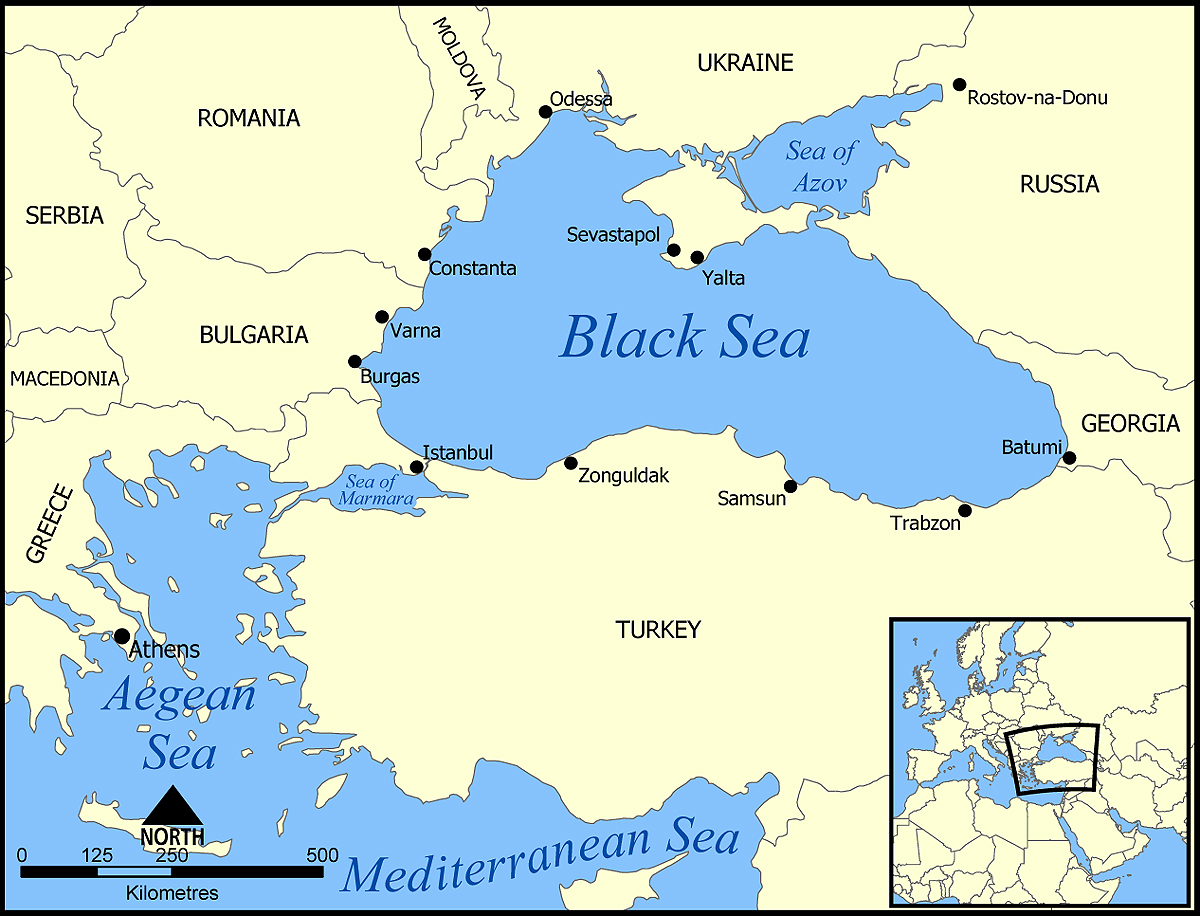Ruta de navegación
Menú de navegación
Blogs
Entries with Categories Global Affairs Central Europe and Russia .
Introduction to the project cooperation of 12 EU countries located between the Baltic, Adriatic and Black Seas.
In addition to the East-West integration efforts of EU enlargement, a number of North-South linking initiatives have been added between the countries of Central and Eastern Europe, such as the Three Seas Initiative. The goal is aimed at overcoming the road infrastructure deficit and improving connectivity between these nations, which will enhance cooperation in the region and in the EU as a whole.
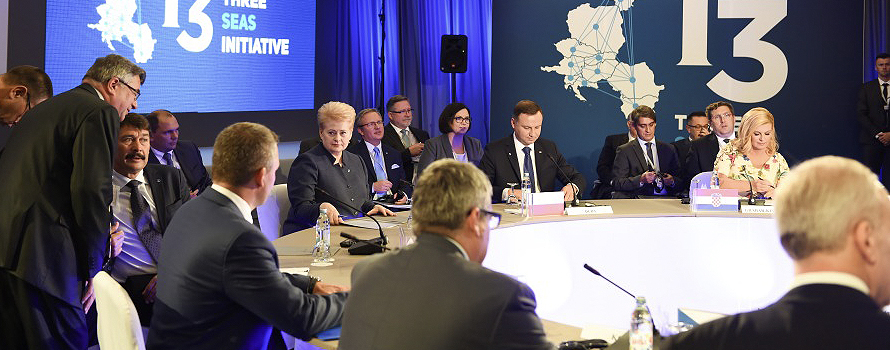
▲First meeting of the new forum, in the Croatian city of Dubrovnik, in August 2016 [i3].
article / Paula Ulibarrena
What is it and what does it aim to achieve?
It is an initiative of Poland and Croatia that brings together 12 countries located between the Baltic, Adriatic and Black Seas and is therefore also known as the Baltic, Adriatic, Black Sea (BABS) Initiative.
The key goal is promote that these countries of the European Union have greater cooperation in infrastructure development , economic development , economic cooperation and above all in energy resources. Polish President Andrzej Duda expressed the hope that the Three Seas Initiative would contribute to the modernisation, integration and unification of Central Europe, Eastern Europe and the entire European Union.
How and where was this forum born?
Since the fall of the Berlin Wall, much progress has been made towards a united, free and peaceful Europe. The entrance of Central European countries in the European Union and NATO has contributed to the security, stability and prosperity of the entire continent. But this work is far from complete. And the cohesive role of infrastructure will be crucial in achieving this.
For more than half a century, efforts to develop European connections and infrastructure focused on the East-West axis. After the fall of the Wall, governments in the region focused on integrating their economies into Western markets, leaving the development of a North-South interregional infrastructure on the back burner. After decades of disinvestment, a major effort has been made in the last twenty years to catch up: 5,600 kilometres of motorway have been built. But the imbalance between the two Europes is still glaring: a citizen of old Europe has twice as many kilometres of motorway as a citizen of central Europe, average.
|
▲Wikimedia Commons [JayCoop]. |
goal With the aim of reversing status, the presidents of Poland and Croatia, Andrzej Duda and Kolinda Grabar-Kitarović, respectively, launched in 2015 a project for the construction of energy, transport and telecommunications infrastructure in Central Europe. They called it the Three Seas Initiative.
By whom is it formed?
The initiative aims to modernise economic links between the twelve EU nations located between the Baltic, the Black Sea and the Adriatic Sea (Austria, Bulgaria, Croatia, the Czech Republic, Estonia, Hungary, Latvia, Lithuania, Poland, Romania, Slovakia and Slovenia). This region accounts for 28% of the European Union's territory and 22% of its population. But it accounts for only 10% of its GDP.
In 2016, Poland and Croatia were joined by most Eastern European countries: Austria, Bulgaria, Slovakia, Slovenia, Estonia, Hungary, Latvia, Lithuania, Czech Republic and Romania. Thus a north-south axis that, with the exception of Austria, corresponds to the former communist countries.
The so-called Three Seas Initiative held its first session on 25-26 August 2016 in Dubrovnik and ended with a declaration of cooperation on subject economic cooperation, particularly in the fields of energy, transport and communications. In addition to the member states, representatives of the Chinese Ministry of Foreign Affairs and the US Homeland Security committee attended as guests.
The second meeting took place on 6-7 July 2017 in Warsaw, with US President Donald Trump as a guest. In fact, this visit was a slight snub to other EU countries.
The third meeting will take place in Romania in 2018, although the city has not yet been fixed.
How is it financed?
150 billion from the Structural Funds, plus additional money from the Connecting Europe Facility and the European Investment Bank. However, more than 384 billion still needs to be invested in another 2,000 projects to fill in or modernise these corridors.
An investment of this size is beyond the possibilities of public institutions, so infrastructure companies and financial institutions will have to play a key role. Up to now, this subject of financing has been much less important than state contributions. However, the increase in public debt makes it increasingly interesting to have sources that minimise the impact on public accounts.
Screening
Faced with this magnitude of resource requirements, the question arises as to whether Central Europe is really an attractive market for investment. In this respect, two points can be made. This is a region with, firstly, very good economic growth prospects (expected to outpace Old Europe over the next five years), and secondly, with a construction sector that is expected to grow at a rate of 3.1% per annum average (compared to 2.3% for Western Europe), according to data by BMI Research. This is certainly attractive for investors.
The other side of the story is that we are still an emerging region. And, of course, this, in addition to generating reserves, brings with it a higher level of risk. In this sense, we also have very different situations depending on which country in the region we are looking at. For example, Estonia right now is what investors call a "sweet spot", with very high returns and low risk. But it is the only country in the region in this category. There are countries - such as Lithuania, Croatia, Slovakia and Slovenia - where the risks are equivalent to those of Greece or Italy, but the returns are relatively low. And others have the opposite problem: high returns but too much risk.
The experience of those players already present in this area -some of them Spanish, such as Ferrovial, Bankia or BBVA-, shows that although each country has significant peculiarities, there are some common risks. To mention them briefly: lack of political support; regulatory regimes that lack transparency; very complex contracting processes - such as PPPs and concessions -; lack of projects with the necessary level of maturity to arouse investor appetite, and the lack of skill in the public sector in these countries to take advantage of private-sector funding schemes, among others.
In an increasingly competitive and global Economics , the prosperity and well-being of a united Europe will depend on how quickly it adapts to today's world. In that process, building a connected, safe, affordable and sustainable transport network connecting the EU from north to south is core topic. Doing so will have a direct impact on increasing the competitiveness of all European countries, and consequently on the economic growth of Europe as a whole.
Moscow continues militarization of the peninsula to prevent other forces from entering the region
Since the turn of the century, Russia had been losing economic, political and military influence in several Black Sea littoral countries; the seizure of Crimea attempted to correct the status. The Kremlin has just deployed a new missile group on the peninsula, in the framework of a long-term rearmament program deadline that seeks to ensure that operationally the Black Sea is a Russian 'lake'.
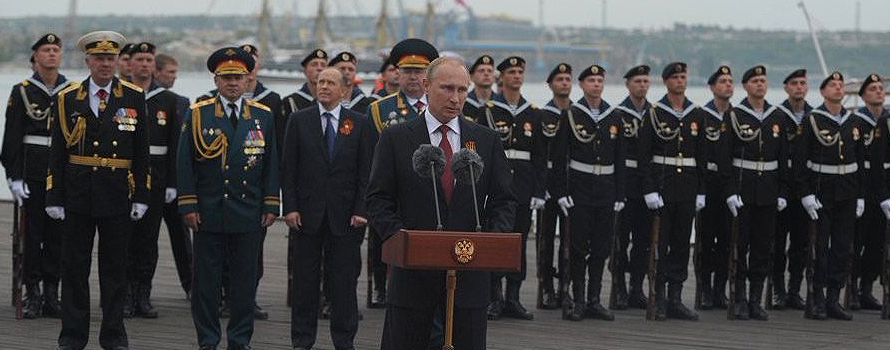
▲Putin in Sevastopol during the 2014 celebration of the victory in World War II [Kremlin].
article / Vitaliy Stepanyuk
"The bear will not ask anyone's permission." This was the allegory used by Russian President Vladimir Putin, at a Valdai Discussion Club meeting in October 2014, to reflect that Russia will not seek anyone's permission when pursuing its national interests and those of its people.
These words were pronounced a few months after the Russian annexation of the Crimean peninsula. The process of change of government had been initiated and troops had been mobilized to the newly incorporated territory, making any subject Ukrainian intervention to regain their land impossible. Approximately four years later, the militarization of the peninsula continues its course by the Russian Federation.
Thus, the deployment of a new defense system in Crimea has just become known, an action justified by Moscow as a measure to protect the airspace over the Russian-Ukrainian border, and also to deal with continued threatening activity on the border, arising mainly from the presence of NATO.
Since the occupation of Crimea, the Kremlin has initiated a long-term rearmament program deadline to achieve a zone (A2/AD) that would prevent other forces from accessing the region. This zone would limit the freedom of both air and ground maneuver for potential invaders. Together with other missile systems in Armenia, Krasnodar and elsewhere, this establishes a truly comprehensive anti-access zone. The establishment of advanced defense systems, the update of radars, the modernization of the Black Sea Fleet and the deployment of fighter aircraft are some of the initiatives undertaken to create such a blockade zone against any outside advance. In the coming years, six new attack submarines and six new surface ships are planned to be added to that Fleet, which could operate beyond the Black Sea, even supporting military operations in Syria.
Moving away from the old satellites
The increase in NATO troops and their presence in countries bordering Russia is seen by Russia as a threat to its security. Countries such as Poland, where NATO mobilized in January 2017 about 3.500 soldiers, and others such as Estonia, Latvia, Lithuania, Romania, Bulgaria and Hungary see the deployment as necessary in view of the status occurred in Ukraine and Russian military exercises near their borders: a clear example is Zapad 2017, a set of strategic and military exercises carried out jointly by Russian and Belarusian troops, in Belarus, in the Kaliningrad Oblast and along the entire northern strip bordering NATO countries.
|
Map from Wikimedia Commons |
Looking back over the recent history of the last 20 years, we can see how Russia has been losing economic, political and military influence over the territories bordering the Black Sea since the beginning of the century. Thus, in Georgia (2004) and Ukraine (2005), more pro-Russian presidents were replaced by more pro-Western ones. In addition, Bulgaria and Romania had become members of NATO, while Georgia and Ukraine were working on it.
Operations in the Black Sea area
Threatened by this status, Russia decided to do everything possible to prevent Georgia and Ukraine from becoming NATO members, while at the same time developing strategies to remove the remaining states from NATO's influence.
With the invasion of Georgia in 2008, the Kremlin showed its determination to contain NATO, maintaining to this day a B military influence in various regions of that country. The same happened in Ukraine after the flight of former President Viktor Yanukovych, when Russia invaded Crimea in March 2014. In this way, it secured control over the naval base of its Black Sea Fleet located in Sevastopol (Crimea). It also militarily supports pro-Russian separatists in the war in Eastern Ukraine, destabilizing the country.
In other countries bordering the Black Sea, Russia has acted differently. In the case of Bulgaria and Romania, the only countries bordering the Black Sea that are members of the European Union, Russian influence prevails in supporting pro-Russian political parties and establishing strong ties at subject business. However, Romania is another region that constitutes a challenge to Russian foreign policy, due to its impetus in defending NATO's presence in the Black Sea.
In the case of Turkey, which unlike several of the countries mentioned above was not part of the USSR or the Soviet bloc, the Kremlin has supported the authoritarianism carried out by the government of Recep Tayyip Erdogan, seeking mainly two basic objectives: to dissociate Turkey from NATO, to which it has belonged almost since its beginnings (1952), and to ensure its friendship with the country that exercises control over the Bosphorus and Dardanelles Straits, which allow access to the Mediterranean Sea. If Turkey were to close the straits, the Russian fleet would be isolated and unable to exert its influence beyond the Black Sea. This could happen if Turkey and Russia were to find themselves at odds with each other in a conflict. In such a case, as the second strongest military power in the region, Turkey could be a clear threat to isolated Russian troops. On the other hand, the relationship with Turkey presents numerous challenges for Moscow: one example is the disagreement over the Syrian conflict, where Turkey opposes the Assad regime, while Russia supports it.
Importance of the Black Sea
At final, Russia seeks to strengthen its influence and dominance over the Black Sea. This is mainly due to some essential characteristics: firstly, this sea is an important strategic point, as it would allow access to the various adjoining territories; secondly, control over ports and trade routes would give the power to obstruct trade and energy supplies (it is a territory crossed by a multitude of energy transport pipelines); finally, Russia could greatly influence regions that share a common history with Russia, infringing on its relationship with NATO.
Immediate challenge
In conclusion, it is interesting to understand that the main challenge facing Russia is to maintain the status quo, according to Yuval Weber, a professor at Harvard University. To do so, Russia has to be able to maintain the separatist group in the Ukrainian war, until the Kiev government falls and can then engage in conversation with a possible puppet government that will accept a solution on Russian terms. However, maintaining such a state of affairs implies having to deal simultaneously with international intervention and Russia's own weak domestic economic status , where there is growing social dissatisfaction over wages, cutbacks in services, poverty in some regions, among other problems.
Both Russia's internal and external status , as well as that of its territories of influence, are contingent on the results of the upcoming Russian presidential elections, to be held on March 18, 2018. The World Cup is not the only thing at stake.
Russia's GLONASS positioning system has placed ground stations in Brazil and Nicaragua; the Brazilian ones are accessible, but the Nicaraguan one is open to conjecture.
At a time when Russia has declared its interest in having military installations in the Caribbean again, the opening of a Russian station in Managua's area has raised some suspicions. Roscosmos, the Russian space agency, has opened four stations in Brazil, managed with transparency and easy access; in contrast, the one it has built in Nicaragua is shrouded in secrecy. The little that is known about the Nicaraguan station, strangely larger than the others, contrasts with how openly data can be collected about the Brazilian ones.
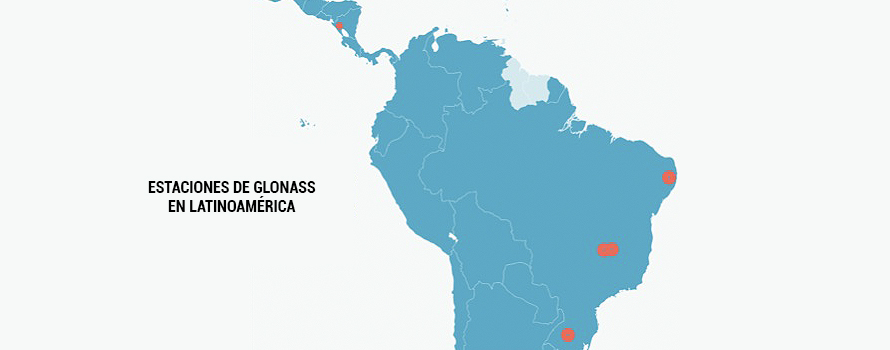
article / Jakub Hodek [English version].
It is well known that information is power. The more information one has and manages, the more power one enjoys. This approach should be taken when examining the station facilities that support the Russian satellite navigation system and their construction in close proximity to the United States. Of course, we are no longer in the Cold War period, but some traumas of those old days can perhaps help us to better understand the cautious position of the United States and the importance Russia sees in having its facilities in Brazil and especially in Nicaragua.
That historical background of the Cold War is at the origin of the two major navigation systems we use today. The United States launched the Global Positioning System (GPS) project in 1973, and possibly in response, the Soviet Union introduced its own positioning system (GLONASS) three years later. [1] Nearly 45 years have passed, and these two systems are no longer serving as a means for Russians and Americans to try to obtain information about the opposing side, but are collaborating and thus providing a more accurate and faster navigation system for consumers who purchase a smartphone or other electronic device. [2]
However, to achieve global coverage both systems need not only satellites, but also ground stations strategically located around the world. With that purpose, Russian Federal Space Agency Roscosmos has erected stations for the GLONASS system in Russia, Antarctica and South Africa, as well as in the Western Hemisphere: it already has four stations in Brazil and since April 2017 it has one in Nicaragua, which due to the secrecy surrounding its function has caused distrust and suspicion in the United States [3] (USA, for its part, has GPS ground stations in its territory and in Australia, Argentina, United Kingdom, Bahrain, Ecuador, South Korea, Tahiti, South Africa and New Zealand).
The Russian Global Navigation Satellite System(Globalnaya Navigatsionnaya Sputnikovaya Sputnikovaya Sistema or GLONASS) is a positioning system operated by the Russian Aerospace Defense Forces. It consists of 28 satellites, allowing real-time positioning and speed data for surface, sea and airborne objects around the world. [ 4] In principle GLONASS does not transmit any identification information staff; in fact, user devices only receive signals from the satellites, without transmitting anything back. However, it was originally developed with military applications in mind and carries encrypted signals that are supposed to provide higher resolutions to authorized military users (same the US GPS). [5]
In Brazil, there are four ground stations used to track signals from the GLONASS constellation. These stations serve as correction points in the western hemisphere and help to significantly improve the accuracy of navigation signals. Russia is in close and transparent partnership with the Brazilian space agency (AEB), promoting the research and development of the South American country's aerospace sector.
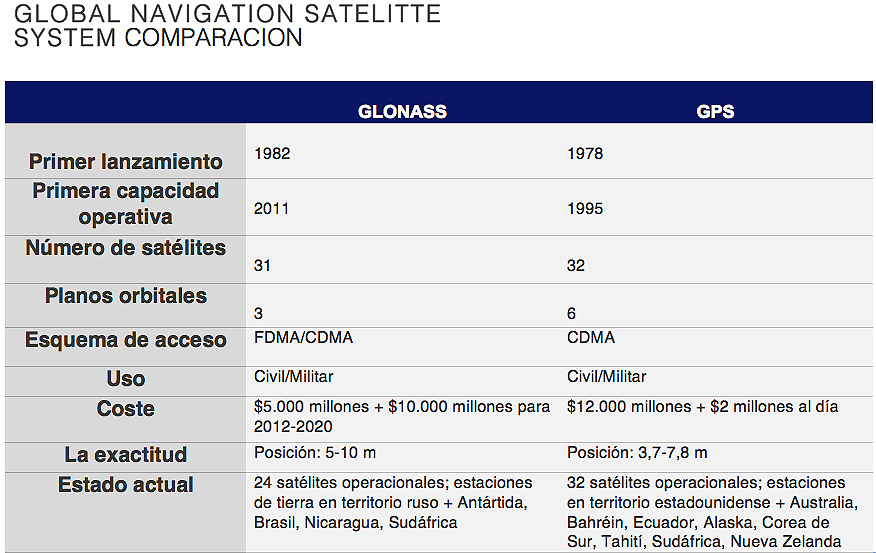 |
In 2013, the first station was installed, located at campus of the University of Brasilia, which was also the first Russian station of that subject abroad. Another station followed at the same location in 2014, and later, in 2016, a third one was placed at the high school Federal Science Education and Technology of Pernambuco, in Recife. The Russian Federal Space Agency Roscosmos built its fourth Brazilian station on the territory of the Federal University of Santa Maria, in Rio Grande do Sul. In addition to fulfilling its main purpose of increasing the accuracy and improving the performance of GLONASS, the facility can be used by Brazilian scientists to carry out other types of scientific research . [6]
The level of transparency that surrounded the construction and then prevailed in the management of the stations in Brazil is definitely not the same applied to the one opened in Managua, the capital of Nicaragua. There are several pieces of information that sow doubts regarding the real use of the station. To begin with, there is no information on the cost of the facilities or on the specialization of the staff. The fact that it has been placed a short distance from the U.S. Embassy has given rise to conjecture about its use for eavesdropping and espionage.
In addition, vague answers from representatives of Nicaragua and Roscosmos about the use of the station have failed to convey confidence about project. It is a "strategicproject " for both Nicaragua and Russia, concluded Laureano Ortega, the son of the Nicaraguan president. Both countries claim to have a very fluid and close cooperation in many spheres, such as in projects related to health and development, however none of them have materialized with such speed and dedication. [7]
Given Russia's increased military presence in Nicaragua, empowered by the agreement facilitating the docking of Russian warships in Nicaragua announced by Russian Defense Minister Sergei Shoigu during his visit to the Central American country in February 2015, and also concretized in the donation of 50 Russian T-72B1 tanks in 2016 and the increasing movement of the Russian military staff , it can be concluded that Russia clearly sees strategic importance in its presence in Nicaragua. [ 8] [ 9] All this is viewed with suspicion from the U.S. The head of the U.S. Southern Command, Kirt Tidd, warned in April that "the Russians are pursuing an unsettling posture" in Nicaragua, which "impacts the stability of the region."
Undoubtedly, when world powers such as Russia or the United States act outside their territory, they are always guided by a combination of motivations. Strategic moves are essential in the game of world politics. For this very reason, the financial aid that a country receives or the partnership that it can establish with a great power is often subject to political conditionality. In this case, it is difficult to know for sure what exactly is the goal of the station in Nicaragua or even those in Brazil. At first glance, the goal seems neutral-offering higher quality of navigation system and providing a different option to GPS-but given the new value Russia is placing on its geopolitical capabilities, there is the possibility of a more strategic use.
Showing the range 21 - 23 of 23 results.


